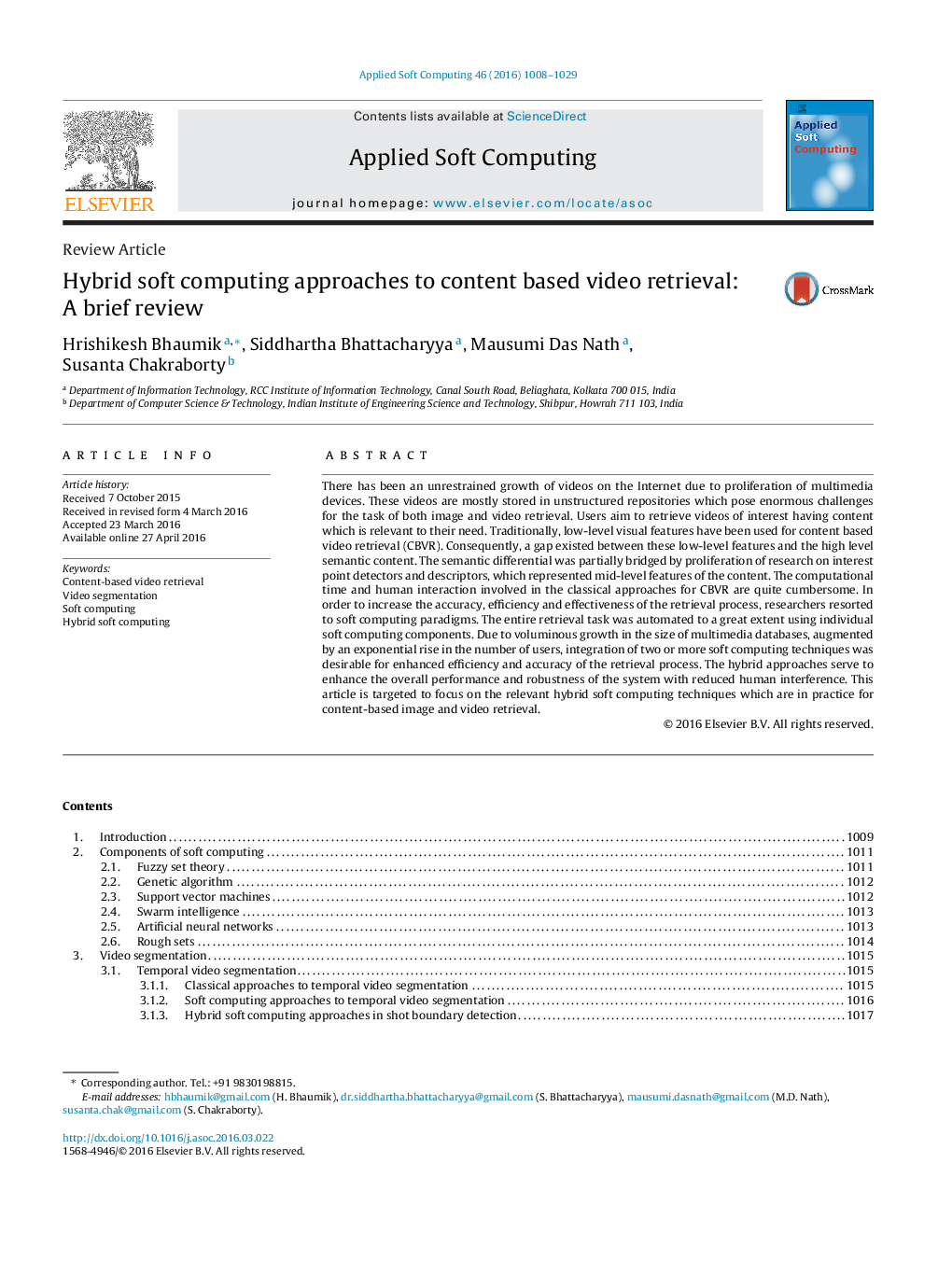| Article ID | Journal | Published Year | Pages | File Type |
|---|---|---|---|---|
| 494721 | Applied Soft Computing | 2016 | 22 Pages |
There has been an unrestrained growth of videos on the Internet due to proliferation of multimedia devices. These videos are mostly stored in unstructured repositories which pose enormous challenges for the task of both image and video retrieval. Users aim to retrieve videos of interest having content which is relevant to their need. Traditionally, low-level visual features have been used for content based video retrieval (CBVR). Consequently, a gap existed between these low-level features and the high level semantic content. The semantic differential was partially bridged by proliferation of research on interest point detectors and descriptors, which represented mid-level features of the content. The computational time and human interaction involved in the classical approaches for CBVR are quite cumbersome. In order to increase the accuracy, efficiency and effectiveness of the retrieval process, researchers resorted to soft computing paradigms. The entire retrieval task was automated to a great extent using individual soft computing components. Due to voluminous growth in the size of multimedia databases, augmented by an exponential rise in the number of users, integration of two or more soft computing techniques was desirable for enhanced efficiency and accuracy of the retrieval process. The hybrid approaches serve to enhance the overall performance and robustness of the system with reduced human interference. This article is targeted to focus on the relevant hybrid soft computing techniques which are in practice for content-based image and video retrieval.
Graphical abstractFigure optionsDownload full-size imageDownload as PowerPoint slide
